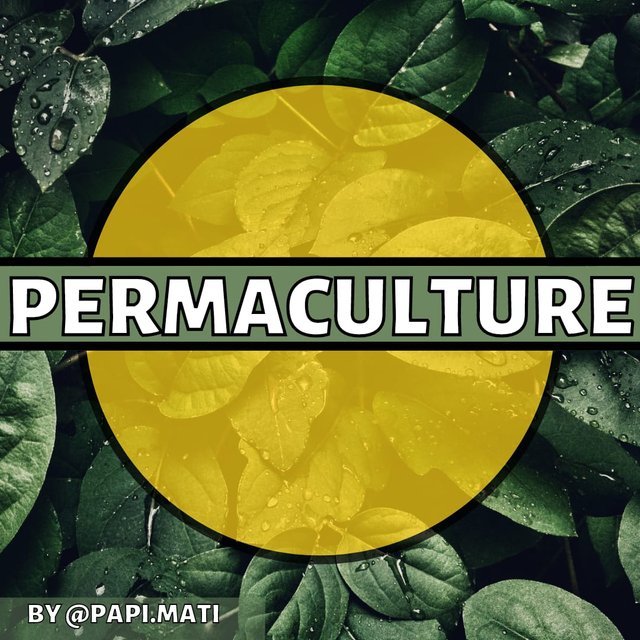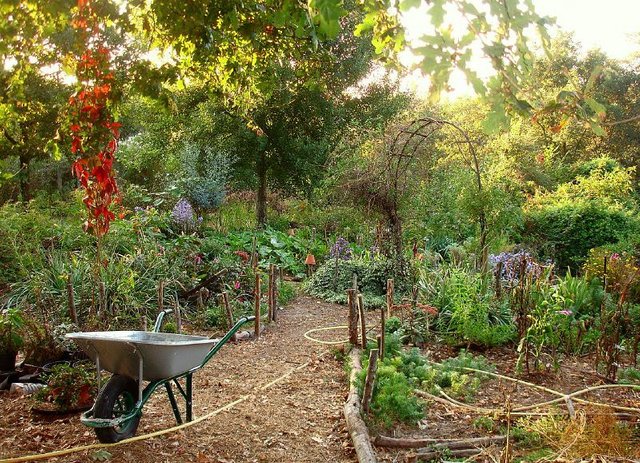Permaculture - Sectors in Permaculture (lesson 17)
Intro

In the previous lesson we talked about the different zones in our garden that help to arrange individual elements on the plot. Arranging is made in such a way as to minimize work and take advantage of their mutual positive influence on each other.
Today we are going to extend this knowledge to sectors - the second key factor in design.
Sectors in permaculture design
A general rule of thumb for designing zones around your home should be to consider the time that is required to observe or work with a specific object. However, we cannot forget about external factors such as sunlight, winds, soil quality, water stagnation. For example, when deciding to grow basil, a sun-loving herb, we should try to place it in zone one. However, if we purchased a plot of land with some larger trees right next to the house, instead of removing the trees that obscure the space just to plant herb, it is more logical and obvious to decide to make an exception to the rule and plant basil a little further away in zone 2.
It is also a good idea to place the sectors with the highest / lowest sun exposure in summer and winter, where the winds are more intense than in others, where the views are more or less pleasant, where it is easier to spread the fire or where it is easier for the presence of wild animals. Such awareness, which we can only acquire through long-term observation of our plot, will allow us to introduce appropriate improvements to prevent adversity.
- Wind can be used to generate energy or increase the fertility of wind-pollinated plants when we can plant less delicate plants in a zone sheltered from it. It is also good to know which way it is blowing so that it does not carry smells from animals and composts towards the house.
- The sun allows for the effective setting of greenhouses, thermophilic plants with higher requirements for exposure to light, and, of course, it can also be used to obtain energy.
- Places with more pleasant views should be used to introduce relaxation zones
- Provide good enrichment of places exposed to fires with sprinklers. It is better not to afforest them, but rather use them for pastures or simple crops. It is also a good place for any ponds or other water reservoirs
- zones with common wild animals presence, if cannot be used as zone 5, can be fenced or put in place for deterrents such as a scarecrow.
The next lesson will be dedicated to the example of some permaculture project, so you can summarize the knowledge about zones and sectors and understand it better.
Little tips when arranging a garden:
- place the greenhouse next to the tap and north of the pond to catch the reflected light. It should be in the solar sector, out of reach of winter wind and away from the fire sector. It can also be used in an area with an ugly view to cover less eye-catching elements of the landscape.
- Place intensely fragrant plants that attract birds and butterflies next to recreation areas, closer to your home.
- Seed-bed locate close to the water source, near home
- Holding bed next to seedbed to simplify the transfer of the plants
- herb garden as close to the kitchen door as possible to get herbs in the middle of cooking
- a compost bin away from the house, close to the growing beds, preferably surrounded by lilacs or other intensely fragrant and low-attention plants. If you have pets, keep the livestock close to the compost bin. It will help you to transport waste from stables, barns, and henhouses.
- Keep hives away from people and animals, they like the sun, they don't like shade. Maybe on a hill, so when they fly higher they don't disturb us so much.
- Place the greenhouse and garden shed close to home.
- The henhouses build by the greenhouse, then it will keep them warmer
- A zone where vegetables are grown locate in a sunny area. It needs at least 6 hours of direct sunlight.
- Plan the tallest plants on the northern side of your garden so that they do not obscure others with their height,
- to save space, mix fast-growing plants with slow-growing ones, you can plant the same vegetables with an interval to enjoy a fresh product for longer (succession planting)
All my lessons are shared totally for free with a CC-0 license (which means you can copy my text and share it wherever you want to, without the need to mark me as an author). I hope it will bring you joy.
Previous lessons can be read here:
Fertilizers
2 - types of manure and when to use it
3 - Compost. Basics
4 - advanced composting
Soil and minerals
10 - Boron, Molybdenum, Copper, Magnesium
11 - Zinc, Calcium, Iron and other elements
12 - soil components: sand and clay
14 - soil components: calcium, microorganisms, minerals
15 - soil components, part four: water and air
Space
Thank you for reading,
@papi.mati

Wow, it really does cover all the necessary tips regarding permaculture. I have learned and used some of your advice, as I am the one who takes care of his garden, and all of your advice that you post is great!
#affable